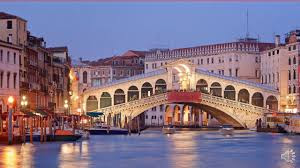Cities And Climate Change
Cities and urban areas host over half of the world’s population, with more than 3.5 billion people living, working or being housed in cities. This trend will continue in the foreseeable future, whereby two thirds of the entire population of the earth is projected to reside in urban areas. This makes cities a primary area of concern when it comes to climate change because of the high concentration of people, given that climate change is manmade and is a result of human activities.
Sustainable cities and communities is goal 11 of the sustainable development goals (SDGs) and is interlinked with several other goals such as life on land, poverty reduction, good health, decent work and responsible consumption.
As it is, major megacities are built next to the sea and other waterways. 9 out of 10 cities are seaside. Cities are important because they are centers of global trade. This is true particularly for those that are ports and so part of the shipping and fishing industries. Cities also serve as centers of government and domicile other important facilities.
 |
| The City of Nairobi, Kenya - photo courtesy |
Cities are important in the climate fight because they are the major consumers of energy. Energy is responsible for the lion’s share of global emissions and of this, cities contribute over 75%. Broken down, these emissions originate from the transport sector, from buildings, industries, waste management and office and household use.
Cities are well known for motorized transport. Due to the huge population of working class people, traffic jams are common in cities as people strive to have an independent, convenient and personal means of transport to their workplaces. This unfortunately contributes to a huge buildup of vehicles all emitting exhaust into the atmosphere. Currently, most vehicles use fossil fuels to operate which translates to emissions of carbon dioxide being at an all-time high in urban centers as compared to the surrounding rural areas.
The high concentration of people in urban areas exposed to air pollution means that poor air quality has become a public health issue. This is because human health is gravely affected especially in the case of the vulnerable like the elderly. Vehicle exhaust contains lead, sulphur (IV) oxide and nitrogen dioxide. All these substances are pollutants and cause developmental problems in children. Exhaust also contains ground level ozone which is a greenhouse gas, and a cause of smog.
This is one of the reasons why cities are hotter, a phenomenon known as the urban heat island effect.
As a remedy, introduction of electric vehicles which use renewable energy would lower transport emissions. Another way is to have an efficient, fast and clean public transport system, such as the Bus Rapid Transport system. This would reduce reliance on private means and reduce gridlocks. To supplement this, cities should factor in pedestrian and non-motorized transport when undertaking urban planning. People should be encouraged to walk and cycle to their destinations and the walkways to do so should be made available and legally protected.
Another ingenious way I have seen is the incorporation of solar panels on traffic stops or roads which capture solar energy to be added to the main grid for use.
Industries are another source of greenhouse gas emissions. Since energy is used in manufacturing, factories belching gases into the air release a considerable amount of carbon dioxide and further fuel climatic changes.
Office buildings and skyscrapers common to cities are also a source of climate pollution. The materials used to construct them are usually made using energy from fossil fuels. Some like steel are directly derived from fossil fuels. Buildings also use a lot of energy for heating and lighting as well as air conditioning. Refrigerants and air coolants release hydroflourocarbons and chlorofluorocarbons, both of which are greenhouse gases.
To change this, architecture and construction of buildings should be done in such a way as to minimize the usage of artificial energy. Situating windows in such a way as to allow for natural ventilation, aeration as well as lighting is the way to go. Use of eco-friendly and sustainable materials is also recommended. Such materials should be recycled or reusable and should be biodegradable or otherwise cannot have a big carbon footprint.
Combining rooftop solar with gardens would help generate renewable energy for local use and reduce reliance on non-renewable mains. In corporation of greenery in the building not only makes for an aesthetically appealing atmosphere but also literally cleans up the air. Plants absorb carbon dioxide and release oxygen which is necessary for human respiration. They also add moisture to the air.
Skyscrapers made of glass block wind movement and air circulation because of their height. They also reflect both heat and light to one another thus exacerbating the situation. It is better to plant trees in between buildings and have dedicated green spaces such as parks within cities. Research shows that natural and green spaces naturally alleviate and uplift the human mood when looked at from a psychological view. This is known as nature therapy.
Green spaces such as parks attract birds and animals, and provide resting places for the city populace. Green spaces allow for infiltration of surface run off thereby reducing flooding. They also release water vapor and cool the air and so improve the atmosphere.
The effects of climate change such as stronger cyclones, floods, droughts and extreme heat or cold pose a threat to the built environment. This can affect modes of transportation such as roads and rail as well as buildings. There is a need to climate proof infrastructure in order to make it stronger and more resilient. Newer and effective technology on methods of climate proofing infrastructure continues to emerge. Such should be considered in retrofitting existing infrastructure or in engineering of new pieces.
An example of this would be to use elastic and more durable material to withstand extreme temperature changes and physical battering by the elements such as inundation. Another way is to erect deeper and stronger foundations. Yet another would be to leave space for expansion and contraction and to build physical structures for building support. It is also recommended to plant as much greenery as possible because it stabilizes the soil.
Another source of greenhouse gas emissions in cities is municipal solid waste in landfills. Landfills, when poorly constructed leach heavy chemicals causing groundwater and soil pollution. When not up to standard, they constitute an environmental hazard. Landfills also release methane, which is a potent greenhouse gas. Methane lasts about 8 years in the atmosphere but has a strong global warming potential. Its capacity to absorb and retain heat is quite formidable.
Cities are the hub of trade, business and governments. Mega-cities such as New York and Mumbai are coastal which makes them ideal for many purposes. However, being built by the sea means they are at considerable risk from sea level rise, a major consequence of climate change. Coastal erosion, typhoons and storm surge is also a threat to such cities, all such effects are stronger because of climate change.
It is safe to say that most businesses and enterprises are situated in urban areas. The financial sector such as banks and money markets are encouraged to be more climate responsible. Investments made in green ventures as opposed to those that contribute to climate pollution are gradually gaining ground and becoming morally and financially preferable. Money propels the fossil fuel industry and that same money can be used to fund renewable energy for the safety of the planet and the health of its inhabitants.
Of note is that the money markets are also majorly affected by climate driven natural disasters such as extreme droughts, wildfires, typhoons and floods.
Another major focus of climate action when it comes to cities is lifestyle and consumption patterns. Given that half of mankind lives in cities, food waste is one of the sources of emissions from cities. Energy from household use such as cooking is another. It is encouraged to invest in urban farming as a way to produce food which is more natural and less costly. Emphasis should also be placed on consuming a plant based diet as opposed to animal products. Energy saving appliances and renewable energy such as rooftop solar should also be used.
Cities are the primary source of plastic waste and packaging. Not only is this an environmental hazard especially in the waterways and the ocean, plastics also are made from fossil fuels.
Adaptation to climate change is an important part of urban housing. Research shows that cities cover less than 3% of earth’s total surface area yet produce 60% of emissions. A large percentage of those who live in urban areas inhabit informal settlements known formally as slums. Slums are usually unplanned and lack basic amenities. They are also densely populated.
Almost a billion people live in urban slums, features unique to cities. These people are often of low income and are dependent on menial jobs for daily survival.
As in the case of fast onset events such as floods and cyclones, these areas are the first to be inundated. Lacking proper and efficient drainage systems and built on ecologically sensitive areas such as hillsides and wetlands, the loss of property and sometimes life is quick and fast. Thousands of people are rendered homeless and without basic amenities in a short span of time.
Loose foundations and substrate further weakened by waterlogged soil causes the collapse of slum buildings. They are also threatened by sea level rise in coastal cities. Lacking in economic firepower and able political representation, slum dwellers are often ignored during urban planning and are not included in public participation forums.
Also, their low financial capabilities means they are not able to rebound or rebuild as quickly when hit by such disasters.
A way to solve this is building permanent shelters on safer ground and relocating affected people. Also, restoring wetlands to their original purpose is a part of environmental safeguarding which is beneficial. This is one of the ways in which climate finance is used in adaptation and in creating resilience. Working hand in hand with this, public education on climate change would help prevent future destruction.
The human suffering and economic cost of climate change in cities especially in terms of infrastructure and settlements is of dire concern and should be a wake up call for cities to take the lead in climate action.
Something ingenious I have seen about cities and climate change is happening in Warsaw Poland, where algae are being fed on a diet of carbon dioxide and pollutants and they release clean oxygen. Invention and innovation is laudable and welcome in climate action.
Given that a huge number of people live in cities, then cities should be foremost in both adaptation and mitigation.
In conclusion, on current emission trends, the first threshold of the Paris Agreement which is 1.5 degrees will be attained within the next three decades. Yet if better and more sustainable management of cities is factored in, there is a big chance of staying within the limits and attaining net zero emissions by 2050.
Cities can lead the way.




Comments
Post a Comment